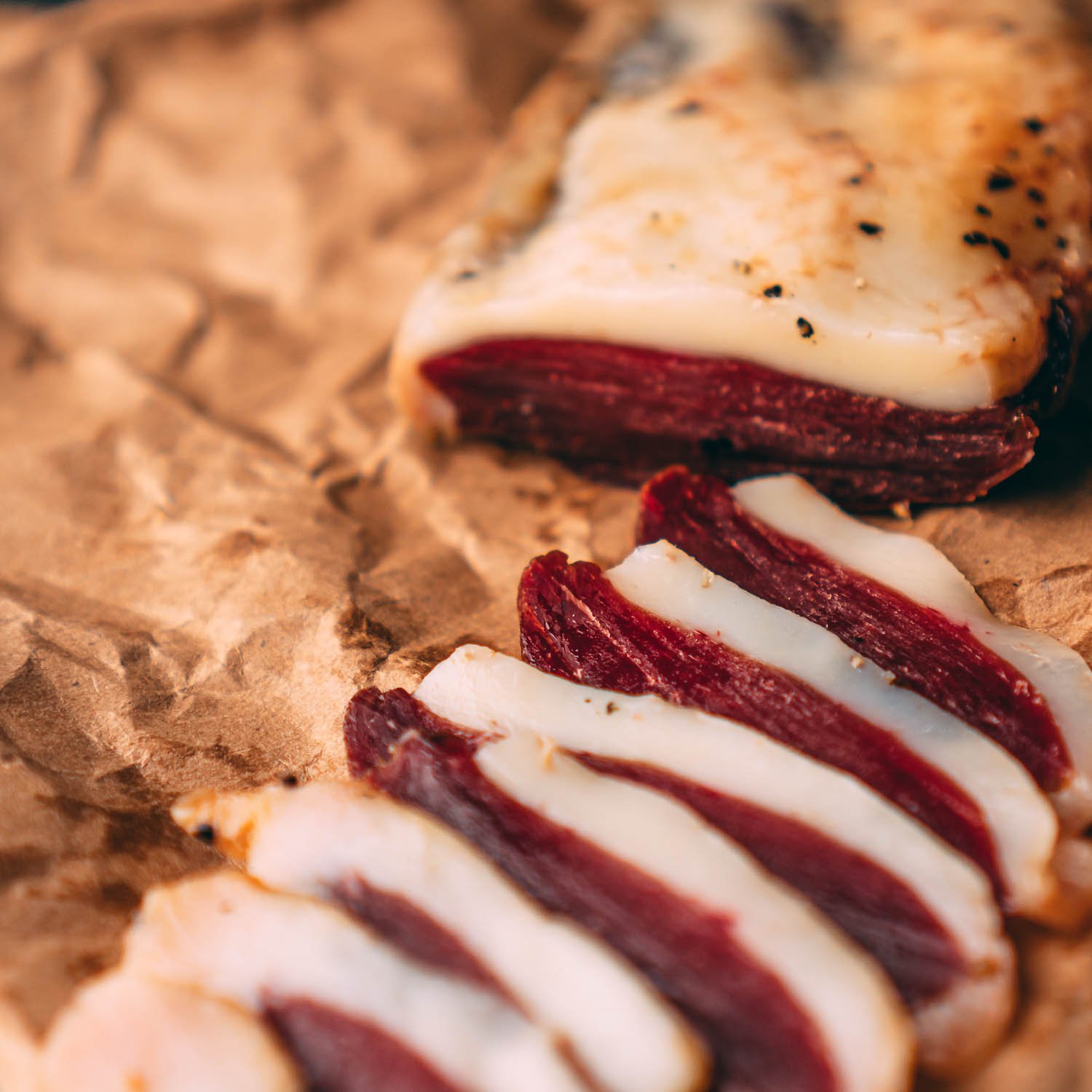How to Make Duck Prosciutto
Sliced duck prosciutto made from dry cured moulard duck breast
Ingredients
1 DUCKCHAR Moulard Duck Breast, boneless, skin-on
3 cups kosher salt, potentially more
1/2 teaspoon white pepper
Dry Curing Directions
Step 1 - To monitor the curing progress of each breast, weigh them separately. Using a sharp knife, create a crisscross pattern on the skin of each breast. In a non-reactive baking dish, place a layer of salt (about 1 cup) that is half an inch thick. Put the breasts in the dish, with the skin side facing up, and then cover them completely with more salt. Use plastic wrap to seal the dish and store in the refrigerator for 24 hours.
Step 2 - Remove duck from salt, rinse thoroughly and pat dry with paper towels. The flesh should feel dense and its color will have deepened. Dust breasts with pepper on both sides.
After removing the duck from the salt, rinse it thoroughly and pat it dry with paper towels. The flesh should be firm and its color will have become more intense. Sprinkle pepper on both sides of the breasts.
Step 3 - Secure each breast with cheesecloth by wrapping it around and securing it with string. Allow it to hang for around 7 days in a cool and humid location such as a garage, basement or unlit fireplace. The ideal temperature for this process is between 50 to 60 degrees. Once cured, the flesh should be firm but not hard throughout, and will have a deep rich red color. If the center of the breast still feels raw, continue to hang for an additional day or two. As a general rule, dry-cured products are ready when they have lost 30% of their initial weight.
Step 4 - Remove cheesecloth, wrap duck in plastic and refrigerate until ready to use. It will keep several weeks or more.
Duck prosciutto products
About this duck prosciutto recipe…
What is duck prosciutto? Is it real prosciutto?
Duck “prosciutto” is not truly prosciutto, but it is used in a similar manner. Traditional Italian charcuterie regards prosciutto as salt-cured meat made from the hind leg of pigs or other animals. However, duck prosciutto, made from salt-cured duck breast, is also a popular variation.
The origin of duck prosciutto comes from Jewish communities in Italy and Spain. As pork prosciutto is not kosher, duck prosciutto was a way for Jewish communities to enjoy the traditional Mediterranean delicacy. Salt-cured meats were essential for survival before refrigeration, and references to 'Jewish ham' or duck prosciutto can be found in literature dating back to the inquisition.
Whether referred to as duck prosciutto or salt-cured duck breast, it is delicious. Slice it thinly and serve it with the same accompaniments as pork-based prosciutto. Add it to a charcuterie board with cornichons, melon, aged cheese, and other cured meats. It pairs well with homemade farmstead cheddar, even if it is not traditional. "
How does the dry curing or salt curing process work?
Salt-curing does not eliminate bacteria from the meat, rather it creates an environment that promotes the growth of specific bacteria. High salt levels inhibit the growth of spoilage bacteria, while allowing lactic acid bacteria to thrive. These lactic acid bacteria, found in yogurt and sauerkraut, ferment the meat, releasing acid which lowers the pH and further prevents spoilage bacteria from growing. This acid also imparts a distinct flavor and dry pickles the meat, preserving it.


